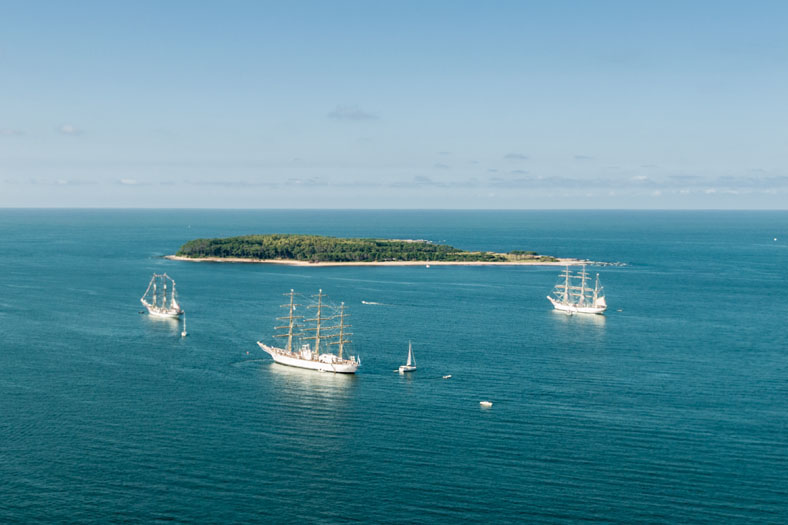Located on the Rio de la Plata (La Plata River), in front of the luxurious resort of Punta Del Este, Gorriti Island has 21 hectares that can be covered on foot. Its natural landscape has a large forest of pines, eucalyptus and tamarises (small African bushes), which provide the perfect environment to relax and rest. The small strip of land now has new billboards that describe its history, geography, fauna and flora.
To get there, just take a boat that leaves the port of Punta Del Este every half hour: the journey takes only 15 minutes. Pleasant surprises await the visitor, who will be able to spend the summer in the popular “Playa Honda”. The place has complete infrastructure for fun and leisure throughout the day. Another of the wonders of the Island is the “Puerto Jardín”, where boats come to practice water sports. Sailboats and yachts are now bringing there, rather than the port of the luxurious seaside resort.
In addition to its natural beauties, the Island is the protagonist of great stories. In another era, it was an old prison that had a cemetery called “of the English”, was frequent place of pirates. It was declared a National Historical Heritage, and in this season of 2018, the Ministry of Tourism next to the department of Maldonado inaugurated the signaling that highlights its history.
There are approximately 30 informational outlets about the geography, history and existing flora. The first written reference of the island dates from 1516, appears in the travel diary of Juan Díaz Solís. The first name of the place – of Las Palmas – dates from 1526 and referred to the Palmeiras that existed there. In 1771 he was named after his current name, due to the captain of Montevideo, the Spaniard Francisco Gorriti, who was imprisoned on the Island for a year for a political problem: he refused to cooperate with a military expedition against Charrúas and Minuanes. The prison was so famous, that today the island bears its name. The governor of Montevideo, Jose Joaquin de Viana, ordered the arrest under the insubordination of Gorriti.
At the time of the Spanish takeover, the dominion of the peninsula and the Island marked the access to the River Plate and constituted the first defense center of the “viceroyalty” (viceroyalty) of the same name, today represented by the cannon batteries local.
The pine trees on the island were planted by Juan Gorlero, the first mayor of Maldonado, under the order of the president of the time Claudio Williman, in 1909. The island has a path, surrounded by green pine trees leading to “Playa Honda” – Beach Honda, and to the other side, the path leads visitors in the same way, but now with clearly signposted sites in English and Spanish.
Since its inception it was used as a burial place for sailors who died at sea. With the arrival of the Imperial Maritime Company, Anglican religious workers arrived, becoming the official cemetery of non-Catholics, those who could not be buried in public cemeteries (Catholics until then) went there. Due to a diplomatic conflict in 1892 with the US, the tombs were taken to the cemetery of Maldonado. Nowadays it is a historical walk that allows to enjoy beautiful baths in the Rio de la Plata (Río de la Plata), to visit the history of the place and to practice sports.
Photo: Uruguay Natural – Ministry of Tourism

